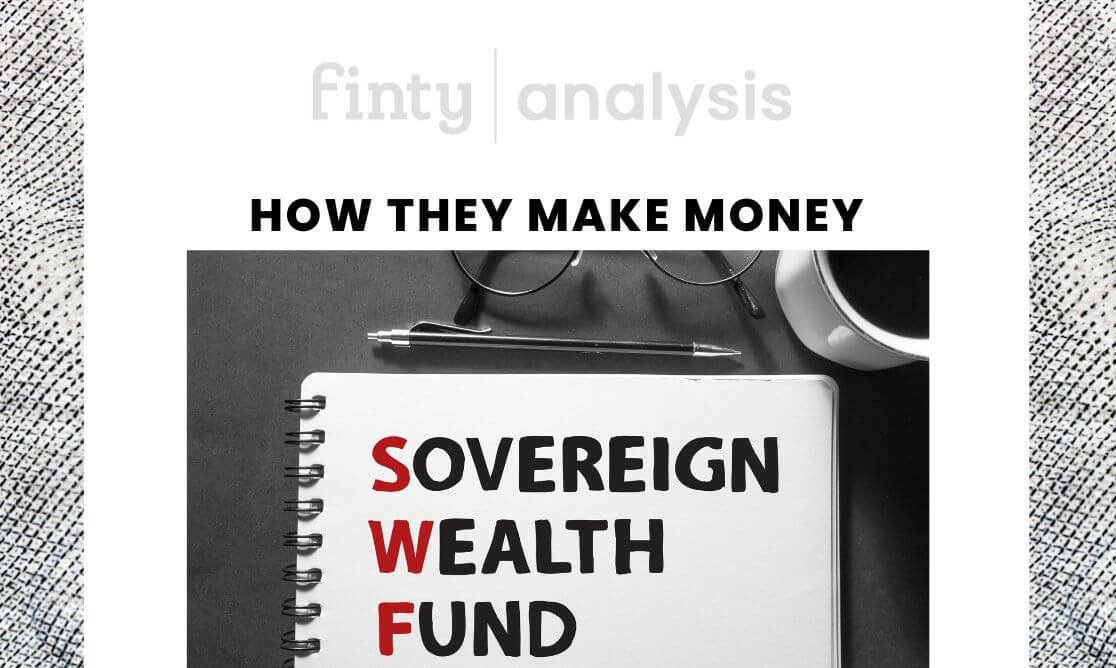Sovereign wealth funds are invisible to the ordinary man on the street, just another piece of financial jargon that pops up occasionally on the news. However, they play an increasingly decisive role in changing the course of many countries’ economies — and the world order.
You might not believe China, Saudi Arabia, and Qatar own iconic landmarks like London's world-famous Harrod’s department store and Heathrow Airport. But that's exactly the kind of investment these giant reserves of sovereign wealth like to park funds in to make a steady return.
In addition, sovereign wealth funds from Singapore and Kuwait are driving the development of alternative energy sources and pioneering new food and mobility solutions worldwide.
But where do these funds get their money from?

Coming up next
What do sovereign wealth funds do?
A sovereign wealth fund (SWF) is a state-owned investment fund comprising money generated by the government, often derived from a country's surplus reserves. SWFs benefit a country's economy and its citizens.
Prominent examples of sovereign wealth funds include China Investment Fund (China), Norges Bank Investment Management (Norway), and Abu Dhabi Investment Authority (UAE).
The funding for an SWF can come from various sources. Popular sources are surplus reserves from state-owned natural resource revenues, trade surpluses, bank reserves that may accumulate from budgeting excesses, foreign currency operations, money from privatizations, and government transfer payments.
In general, sovereign wealth funds usually have a targeted purpose. There are different types of funds depending on which country you look. Some have many of those listed below:
- Stabilization funds
- Savings or future-generation funds
- Public benefit pension reserve funds
- Reserve investment funds
- Strategic Development Sovereign Wealth Funds (SDSWF)
- Funds targeting specific industries (possibly emerging or distressed)
- Foreign currency reserve assets are powerful funds that may be used for specific governmental purposes and for helping to manage the trading power of a currency globally.
Sovereign wealth funds are not to be confused with pension funds, ETFs, REITs, index funds, or mutual funds.
How sovereign wealth funds make money
The amount of money in a Sovereign Wealth Fund is usually substantial. Investments in each SWF vary from fund to fund and country to country. Governments can create or dissolve SWFs to match the needs of their population. Funds with liquidity concerns may limit investments to only very liquid public debt instruments. In some cases, sovereign wealth funds will invest directly in domestic industries. Liquidity, debt, and allocation balances can be critical factors in investment terms.
Over the last half-century, sovereign wealth funds (SWFs) have become a principal policy instrument for countries rich in natural resources to capture and invest these resource rents for the public good of their citizens. As a natural resource such as oil or coal is extracted and sold, the government captures some of the rents and grows the fund by taxing a private seller or diverting some fraction of the public sale to the fund. A natural resource-based SWF serves three primary purposes:
- As savings funds to address intergenerational inequity from the depletion of nonrenewable resources
- As stabilization funds for current generations
- As reserve investment and strategic development funds to spend on human, natural, social, and physical capital
Future growth engine
Sovereign wealth funds are in no danger of dying out; they are more active than ever.
In 2021, they tripled the number of direct investments made in 2020 with nearly 450 deals. They also tripled the value of the deals in 2020, with transactions at $120 billion in 2021.
The question is: Where do sovereign wealth funds invest their money? The answer is straightforward and has been for ten years: the United States.
Sovereign wealth funds worldwide channel almost a third of their annual direct transactions into companies based in the U.S. This has remained stable over the last decade and is not likely to change in the short term.

